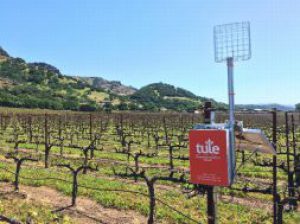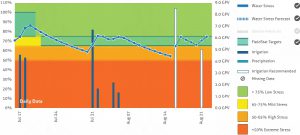
Tule Technologies vineyard sensor.

Tule data dashboard.
Reaping the Benefits of Cutting-Edge Irrigation Technologies
Our Ranch Systems weather stations combined with the Tule sensors have significantly reduced water use as well as labor. And with precision irrigation, the fruit quality dramatically improves.
- Gustavo Aviña, Vineyard Manager, Pine Ridge Vineyards
Once the vines show visual symptoms of stress, the root cause has already taken hold. Decisions are reactionary. Tule shows us vine stress through water status considerably before the vines exhibit visual stress. This accelerates the feedback loop and allows us to tailor irrigation in real-time based on current conditions.
- Matthew Crafton, Winemaker, Chateau Montelena Winery
Read the Series:
1
Save Water, Save Money, Maximize Quality | Efficient, targeted irrigation benefits the bottom line and fruit quality, ensuring vines get the right amount of water at the right time.
2
Reaping the Benefits of Cutting-Edge Irrigation Technologies | Two companies offer precision irrigation technologies to Napa Valley vineyard managers.
Making the commitment to third party certification takes time and effort, but it is worth it to demonstrate our commitment to the community and to protect our watershed, our land and the air we breathe.
- Susan Boswell, Chateau Boswell Winery
